#Absolute Monarchs
Note
How many absolute monarchs are there in the world?
•King Salman of Saudi Arabia
•Pope Francis
•Sultan Haitham bin Tariq of Oman
•Sultan Hassanal Bolkiah of Brunei
•The King of Swaziland (now Eswatini): King Mswati III of Swaziland (AKA Eswatini)
•United Arab Emirates: Sheikh Mohamed bin Zayed (Each of the seven Emirates that form the UAE have their own absolute monarch and Sheikh MBZ, as leader of Dubai, is the overall ruler of the nation.)
Did I miss anybody? I think those are the only absolute monarchs still in power today. The rest of the world's royalty are constitutional monarchs, so they reign but do not rule.
(There's an argument for including Kim Jong Un on the list of absolute monarchs despite the fact that he's not a King and North Korea is a Communist country. He's obviously a dictator, but the Kim dynasty has virtually ruled North Korea like a secular monarchy for nearly 75 years with the supreme leaders inheriting their power through hereditary succession. Kim Jong Un took over immediately upon the death of his father, Kim Jong Il, who had assumed power when his father -- North Korea's first paramount leader, Kim Il Sung -- died in 1994. Of course, North Korea isn't officially considered a monarchy, but the manner in which the Kim family has ruled the country and transferred power from father-to-son for three generations and counting resembles the structure of an absolute monarchy more than a "traditional" totalitarian dictatorship.)
#Absolute Monarchs#Absolute Monarchy#King Salman#Saudi Arabia#Pope Francis#Vatican#Sultan Haitham bin Tariq#Oman#Sultan Hassanal Bolkiah#Brunei#King Mswati III#Swaziland#Eswatini#Sheikh Mohamed bin Zayed#MBZ#United Arab Emirates#Politics#Government#Monarchs#Forms of Government#Power#Executive Power#Kim Jong Un#North Korea#Kim Dynasty#Kim Jong Il#Kim Il Sung#Royalty#Dictators#Totalitarianism
38 notes
·
View notes
Text

Absolute Monarchs: A History of the Papacy - J. J. Norwich
2,000 Years of Popes, Sacred and Profane
By Bill Keller
July 7, 2011
John Julius Norwich makes a point of saying in the introduction to his history of the popes that he is “no scholar” and that he is “an agnostic Protestant.” The first point means that while he will be scrupulous with his copious research, he feels no obligation to unearth new revelations or concoct revisionist theories. The second means that he has “no ax to grind.” In short, his only agenda is to tell us the story.
And he has plenty of story to tell. “Absolute Monarchs” sprawls across Europe and the Levant, over two millenniums, and with an impossibly immense cast: 265 popes (plus various usurpers and antipopes), feral hordes of Vandals, Huns and Visigoths, expansionist emperors, Byzantine intriguers, Borgias and Medicis, heretic zealots, conspiring clerics, bestial inquisitors and more. Norwich manages to organize this crowded stage and produce a rollicking narrative. He keeps things moving at nearly beach-read pace by being selective about where he lingers and by adopting the tone of an enthusiastic tour guide, expert but less than reverent.
A scholar or devout Roman Catholic would probably not have had so much fun, for example, with the tale of Pope Joan, the mid-ninth-century Englishwoman who, according to lore, disguised herself as a man, became pope and was caught out only when she gave birth. Although Norwich regards this as “one of the hoariest canards in papal history,” he cannot resist giving her a chapter of her own. It is a guilty pleasure, especially his deadpan pursuit of the story that the church, determined not to be fooled again, required subsequent papal candidates to sit on a chaise percée (pierced chair) and be groped from below by a junior cleric, who would shout to the multitude, “He has testicles!” Norwich tracks down just such a piece of furniture in the Vatican Museum, dutifully reports that it may have been an obstetric chair intended to symbolize Mother Church, but adds, “It cannot be gainsaid, on the other hand, that it is admirably designed for a diaconal grope; and it is only with considerable reluctance that one turns the idea aside.”
If you were raised Catholic, you may find it disconcerting to see an institution you were taught to think of as the repository of the faith so thoroughly deconsecrated. Norwich says little about theology and treats doctrinal disputes as matters of diplomacy. As he points out, this is in keeping with many of the popes themselves, “a surprising number of whom seem to have been far more interested in their own temporal power than in their spiritual well-being.” For most of their two millenniums, the popes were rulers of a large sectarian state, managers of a civil service, military strategists, occasionally battlefield generals, sometimes patrons of the arts and humanities, and, importantly, diplomats. They were indeed monarchs. (But not, it should be said, “absolute monarchs.” Whichever editor persuaded Norwich to change his British title, “The Popes: A History,” may have done the book a marketing favor but at the cost of accuracy: the popes’ power was invariably shared with or subordinated to emperors and kings of various stripes. In more recent times, the popes have had no civil power outside the 110 acres of Vatican City, no military at all, and even their moral authority has been flouted by legions of the faithful.)
Norwich, whose works of popular history include books on Venice and Byzantium, admires the popes who were effective statesmen and stewards, including Leo I, who protected Rome from the Huns; Benedict XIV, who kept the peace and instituted financial and liturgical reforms, allowing Rome to become the religious and cultural capital of Catholic Europe; and Leo XIII, who steered the Church into the industrial age. The popes who achieved greatness, however, were outnumbered by the corrupt, the inept, the venal, the lecherous, the ruthless, the mediocre and those who didn’t last long enough to make a mark.
Sinners, as any dramatist or newsman can tell you, are more entertaining than saints, and Norwich has much to work with. If you paid attention in high school, you know something of the Borgia popes, who are covered in a chapter succinctly called “The Monsters.” But they were not the first, the last or even the most colorful of the sacred scoundrels. The bishops who recently blamed the scourge of pedophile priests on the libertine culture of the 1960s should consult Norwich for evidence that clerical abuses are not a historical aberration.
Of the minor 15th-century Pope Paul II, to pick one from the ranks of the debauched, Norwich writes: “The pope’s sexual proclivities aroused a good deal of speculation. He seems to have had two weaknesses — for good-looking young men and for melons — though the contemporary rumor that he enjoyed watching the former being tortured while he gorged himself on the latter is surely unlikely.”
Sexual misconduct figures prominently in the history of the papacy (another chapter is entitled “Nicholas I and the Pornocracy”) but is hardly the only blot on the institution. Clement VII, the disastrous second Medici pope, oversaw “the worst sack of Rome since the barbarian invasions, the establishment in Germany of Protestantism as a separate religion and the definitive breakaway of the English church over Henry VIII’s divorce.” Paul IV “opened the most savage campaign in papal history against the Jews,” forcing them into ghettos and destroying synagogues. Gregory XIII spent the papacy into penury. Urban VIII imprisoned Galileo and banned all his works.
Most of the popes, being human, were complicated; the rogues had redeeming features, the capable leaders had defects. Innocent III was the greatest of the medieval popes, a man of galvanizing self-confidence who consolidated the Papal States. But he also initiated the Fourth Crusade, which led to the wild sacking of Constantinople, “the most unspeakable of the many outrages in the whole hideous history of the Crusades.” Sixtus IV sold indulgences and church offices “on a scale previously unparalleled,” made an 8-year-old boy the archbishop of Lisbon and began the horrors of the Spanish Inquisition. But he also commissioned the Sistine Chapel.
Even the Borgia pope Alexander VI, who by the time he bribed his way into office had fathered eight children by at least three women, is credited with keeping the imperiled papacy alive by capable administration and astute diplomacy, “however questionable his means of doing so.”
By the time we reach the 20th century, about 420 pages in, our expectations are not high. We get a disheartening chapter on Pius XI and Pius XII, whose fear of Communism (along with the church’s long streak of anti-Semitism) made them compliant enablers of Mussolini, Hitler and Franco. Pius XI, in Norwich’s view, redeemed himself by his belated but unflinching hostility to the Fascists and Nazis. But his indictment of Pius XII — who resisted every entreaty to speak out against mass murder, even as the trucks were transporting the Jews of Rome to Auschwitz — is compact, evenhanded and devastating. “It is painful to have to record,” Norwich concludes, “that, on the orders of his successor, the process of his canonization has already begun. Suffice it to say here that the current fashion for canonizing all popes on principle will, if continued, make a mockery of sainthood.”
Norwich devotes exactly one chapter to the popes of my lifetime — from the avuncular modernizer John XXIII, whom he plainly loves, to the austere Benedict, off to a “shaky start.” He credits the popular Polish pope, John Paul II — another candidate for sainthood — for his global diplomacy but faults his retrograde views on matters of sex and gender. Norwich’s conclusion may remind readers that he introduced himself as a Protestant agnostic, because whatever his views on God, his views on the papacy are clearly pro-reformation.
“It is now well over half a century since progressive Catholics have longed to see their church bring itself into the modern age,” he writes. “With the accession of every succeeding pontiff they have raised their hopes that some progress might be made on the leading issues of the day — on homosexuality, on contraception, on the ordination of women priests. And each time they have been disappointed.”
0 notes
Text

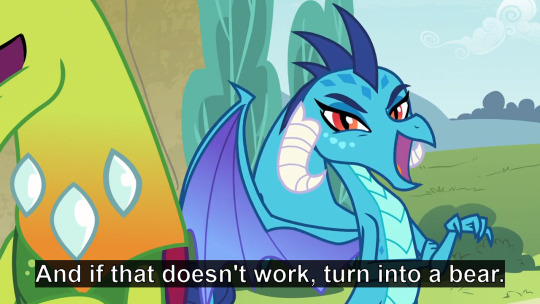
#a reminder that your blorbos are in fact absolute monarchs#mlp#season 7#mlp friendship is magic#mlp fim#mlp g4#My Little Pony#my little pony friendship is magic#Triple Threat#Thorax#Ember
301 notes
·
View notes
Text
Everybody talking about the summit is fueling my urge to draw the vamps/werewolves in the different masquerade outfits from The Arcana even though nobody is gonna get the reference
#Will I be drawing Alexis is Nadia's masquerade dress?#absolutely yes#it's happening#redacted audio#redacted asmr#redactedverse#redacted solaire clan#redacted shaw pack#redacted monarchal summit#redacted vincent solaire#redacted vincent#redacted lovely#redacted sam collins#redacted sam#redacted darlin
178 notes
·
View notes
Text










Back with my tomfoolery I suppose (no context vc chat with QPP edition)
Also I drew the Black Pearl doodle in the fifth pic because I cannot be bothered to find that pissed sprite of her
Previous, Next
#cookie run#cookie run ovenbreak#crob#cookie run kingdom#crk#sea fairy cookie#wind archer cookie#fire spirit cookie#firewind#why do these stupid posts include firewind#abyss monarch cookie#moonlight cookie#millennial tree cookie#tree dad cameo real#timekeeper cookie#black pearl cookie#espresso cookie#strawberry crepe cookie#also don't ask the context to some of these screenshots because I absolutely forgot about it#SORRY THAT SOME SPRITES ARE VERY BLURRY. I DON'T KNOW HOW TO MAKE THEM LESS BLURRY
85 notes
·
View notes
Text
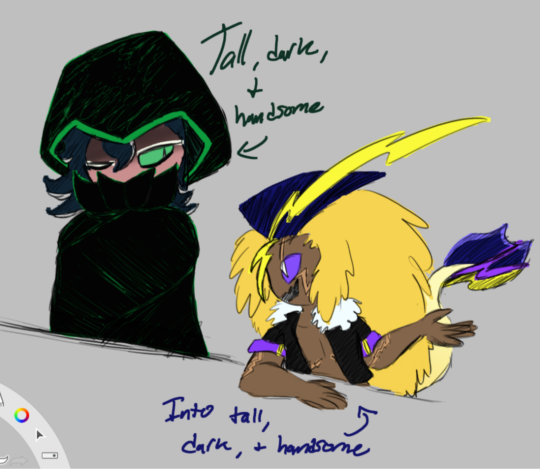
theyre yaoi. theyre yuri. theyre even both nonbinary. the day these two come to kingdom is the day i empty my wallet.
#cookie run#cookie run fanart#abyss monarch cookie#electric eel cookie#abysseel#cookie run ovenbreak#anyways this is doodle from last night i kinda like#and im absolutely INSANE about these two im hjnngh#if you like sunmoon yaoi. seamoon yuri. lightdark yuri. yinyang yaoi. fuck it. opposites attract. theyre even introvert4extrovert#its these guys#fellas theyre even royal x some guy. theyre even monarch x guard. hello is anyone THERE#god i swear you wont regret watching their story.#my art
80 notes
·
View notes
Text
for the longest time i consistently mis-memorized kk's line as "sweet. calm down." and not "sweet. don't worry." so i thought it was really funny that kk would tell sweet to calm down and it just Works when like a minute prior cap'n told them to chill out and it just made them angrier. I know now that Isn't the line but i do think that'd still work
#the seemingly Reverence sweet has for kk and anything he says is really sweet. cute. why is this character named after an adjective#kk says he wants to be a car and sweet is like 'absolutely. you are so smart'. kk says he likes candy and sweet draws moral from that.#youngest sibling who thinks their oldest sibling is the coolest guy ever#deltarune#words from the monarch#scc#your honor they have an average 5 minutes of screen time and they are my favorite characters from anything ever maybe
68 notes
·
View notes
Text

Zettai Kunshu Shoukougun, Absolute Monarch Syndrome, 絕對君主症候群 by Iwashita Shigeyuki.
#manga screencap#manga#manga cap#mangacap#manga art#manga crop#Iwashita Shigeyuki#Zettai Kunshu Shoukougun#Absolute Monarch Syndrome#絕對君主症候群
761 notes
·
View notes
Text
Having to read dozens of essays on how actually Creon was right because his word was law and Antigone broke it for her own selfish reasons so deserved to die is… wild. The story directly tells you that Creon is wrong. A prophet practically looks at the camera and tells you he’s fucked. He loses everything at the end.
#tagamemnon#antigone#classics#don’t support the absolute monarch who’s commuting hubris by denying divine law
40 notes
·
View notes
Text

[Start ID. A digital drawing of Minos Prime from Ultrakill, who's wearing a strapless slit dress and sandals of the same deep purple. He faces towards and slightly to the right of the camera, his head is tilted further right. With one hand he gestures in a vague pointing motion, his arm folded and held close to his body. There is nothing in the background, but bracing himself on one arm, Minos is implied to be leaning against something about the height of a countertop. The background is a blank purplish black, save for three diagonal stripes in the colors of the bisexual flag. End ID]
Shading study that quite literally came to me in a dream two weeks ago, after this post apparently beamed itself into my mind
(also a few edits below the cut! they're very slight but whatever :])

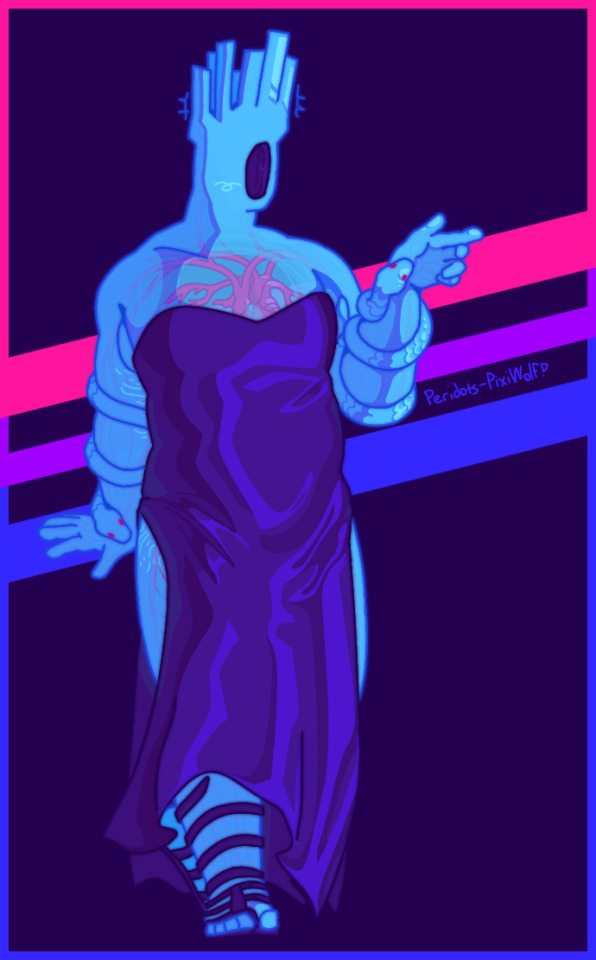

[Start ID. Three different versions of the previous drawing. The first changes the tone of the lighting from blue to pink, and similarly the shading from pink to blue. The second replaces the faint black border with pink, purple and blue, syncing with the stripes in the background. The third combines both these changes. End ID]
#the tags got NERFED so let's try this again.#peridots-art#minos prime ultrakill#ultrakill#ask to tag#organs#...? gore maybe? for the whole ''transparent chest/visible cardiovascular system'' thing. not very detailed/realistic though so#i don't think this has all of the same charm as i usually find in my posts. but i tried my best to make it work so i don't think it matters#also ''not too happy with how this turned out'' is something i've seen tacked onto posts worthy of being preserved in museums#i heard someone say his snakes should be ball pythons. i'm not autistic about snakes so i decided to listen to the masters#i still have seven levels to p-rank before i can meet this guy!! halfway there (lust/greed and 1-3 remaining) i've only had my own copy#of ultrakill for a week and i already have 33 hours in. anyway he's grown on me i think. absolute bi king and only monarch i respect <3#i think it's interesting how i now define my queerness by being gray-ace and trans when i first only identified with bisexual. it's still#an important part of me even if sometimes i forget. sorry that sounds completely unrelated but it's related to my feelings on this piece#anyway (i wonder how many ''anyway''s i've slapped on so far) i also find it interesting how often people draw him with this body type.#i think it's cool there's variety in how people draw the uk characters. it just kinda feels right here? i know i unfortunately don't draw#fat characters often at all (partially due to being a primarily fandom blog who likes to stick to canon designs. i wouldn't say i have#trouble with drawing a realistic amount of fat even on rather thin people though lol) but i try! also genuinely unsure what counts as like.#fat vs chubby? or whatever? i don't know exactly how the terminology works and a fair amount of minos' bulk is muscle anyway but. yeah 👍#men are pretty in dresses my final message. goodbye
187 notes
·
View notes
Text
ooooooo the Elf Queen in dungeon meshi is 372 according to the adventurer's bible & elves live 400-500 years... I THINK IT WOULD BE FUNNY IF SHE DIED
#she's mega racist and an absolute monarch whats the downside?#dunmeshi spoilers#dungeon meshi spoilers#laios devourer of all things horrible becomes king of a newly unsunken atlantis country. declares racism bad. even against orcs.#then the shittiest old bitch in the world IMMEDIATELY kicks the bucket#IT WOULD BE FUN IS ALL IM SAYING#WHAT ARE THE IMPLICATIONS FOR THE HALF-F00T RIGHTS MOVEMENT???#dungeon meshi
25 notes
·
View notes
Text
just rewatched the s5 finale of miraculous and ooo i am itching for some adrien angst. let my boy have his character arc PLEASE
#mlb s5 spoilers#mlb s5 finale#miraculous#will i be upset if that means adrinette breaks up? yes absolutely.#but s6 will not sit right with me if adrien isn't upset with ladybug for lying to him again!#she definitely has to tell chat who monarch was right?#he knows gabriel was the villain so why did she say gabriel was a hero!#and my boy will def share this with marinette at some point#and marinette is all freaked out trying to find out how adrien learned that his dad was monarch when she only told chat noir!#oops! cue chaotic identity reveal!!#anyways im just gonna believe buggachat's fic open my eyes is canon until the actual season is out#and ooooh don't even get me started on lila being the (supposed) new villain#she is perfect and i'm pissed about it#also#bug noire has me so giddy i love her sm#adrien agreste#marinette dupain cheng#ladybug#mak rambles#chat noir
28 notes
·
View notes
Text
Okay but i really gotta love how Suho just KNOWS he is Jinwoo's only weakness. Like this man has his mother, father, jinah, haein, you would think Suho would be "i gotta get strong to protect them because my dad cares about them" BUT NAH instead he is just "yup, im his child, im his gremlin boy, im the most important thing in his eyes so oh fuck Itarims are gonna come after me" AND HE IS RIGHT.
#sung su ho#knows his goddamn worth#bro got spoiled by hos dad so much#and like we dont see flashbacks about him#but we do see jinwoo just lets him have ANYTHING#boy wants to be second dragon monarch?#absolutely do that my child#do that#has fears of being found?#nah go and use your shadows ma child#exposing the his power of shadows through his drawings when he was young?#gonna be a great artist ma boy!#ah man thats fuking cute#spoilers#solo leveling ragnarok spoilers#solo leveling ragnarok
48 notes
·
View notes
Text
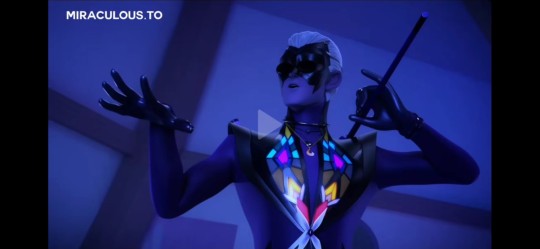
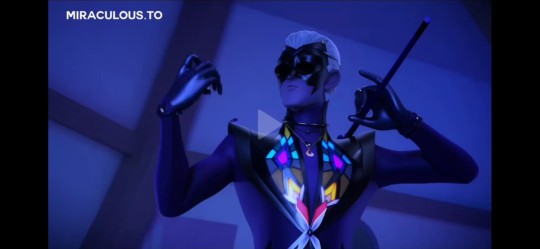
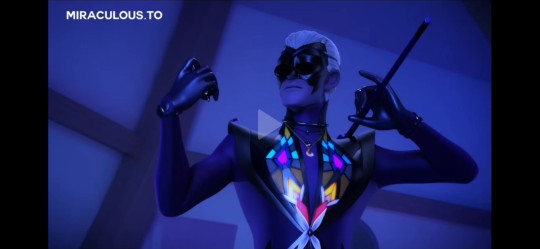



Why is he being... Like That
#god he's so funny#miraculous ladybug#miraculous#ml paris special#monarch#gabriel agreste#miraculous paris#i absolutely love how he's moving around in this scene idk why its so funny to me#ml spoilers
37 notes
·
View notes
Text
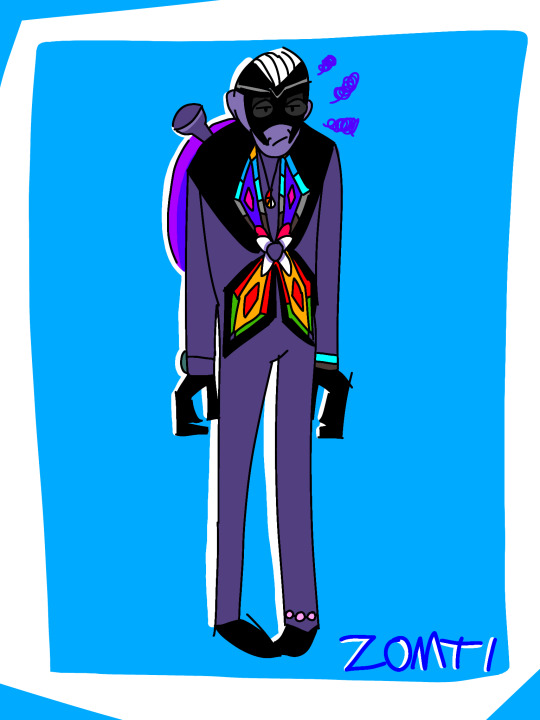
night monarch doodle yall
#i had absolutely no intention in drawing him accurate#bc he doesnt deserve it#my art#miraculous ladybug#miraculous#monarch#gabriel agreste
14 notes
·
View notes
Text
"It's bad to depict a fascist as a human that has real world implications!" buddy I have some terrible news for you about real world fascists that I don't think you're gonna like
#also ozai isn't a fascist he's an imperialist absolute monarch not based on 20th century european politics#but I suppose I wouldn't expect knowledge of political theory here#natla spoilers
11 notes
·
View notes